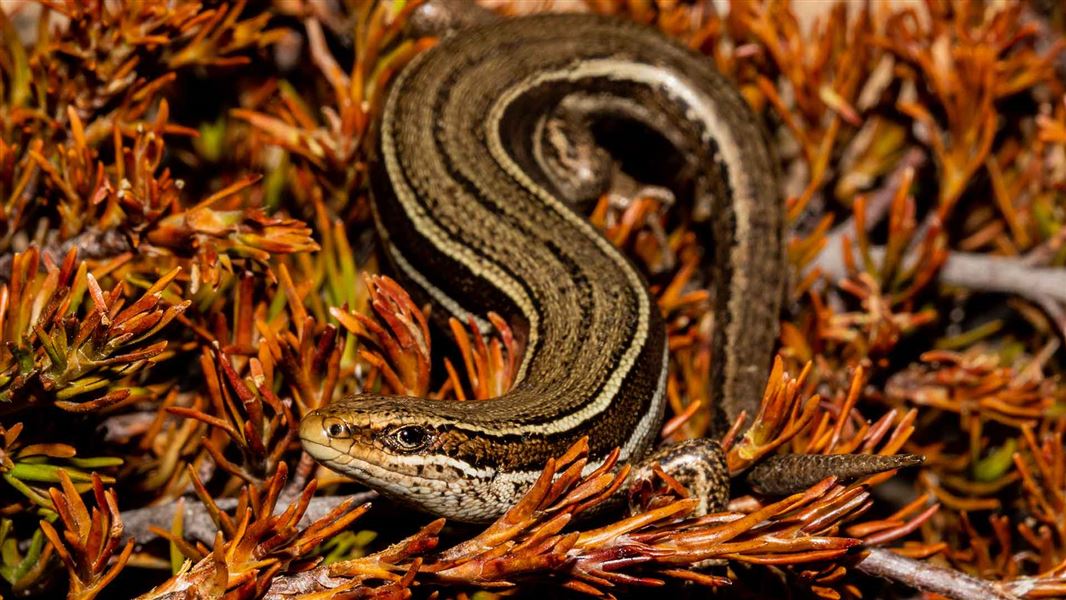Scientific name: Oligosoma
New Zealand status: Endemic
Conservation status: At Risk; Declining
Primary Threats: Unknown but likely mammalian predators, habitat loss and fire
Image gallery
Description
Length: It is a small-medium sized skink, up to 80 mm from the tip of the nose to the base of the tail.
Rockhopper skink population: Unknown, but sparsely scattered across three mountain ranges.
Food: Invertebrates, fruit, nectar.
Distribution
The rockhopper skink is sparsely scattered, but with some reasonably sized populations, across three mountain ranges in Oteake Conservation Park. It is a truly alpine skink as it straddles the border between North Otago and the Mackenzie Country. They primarily occupy vegetated islands and edges amongst scree and talus slopes in Oteake Conservation Park.
Challenges
Very little is known about this species, but they seem to exclusively live in alpine areas from 1,300–1,700 m above sea level and so are considered an alpine specialist. Due to the species’ alpine home, it is most likely a slow-growing, late to mature (at least four years) and long lived (to decadal timeframes) species, who produce small litters.
The species can be hard to detect and tell apart from other small skinks with which they share their alpine habitat, such as McCann’s skink and southern grass skink. Rockhopper skinks are also very secretive and are generally only seen in the early morning, or in cool, mild, sunny conditions.
What we’re doing to learn more
We are still focused on understanding the species distribution, its preferred habitats and likely threats. This information will help define which populations should be protected and the threats present at these sites.
How you can help
We are very keen to learn of any sightings of lizards in the alpine zone of South Island mountains – the area above the tree and shrub zones. If you have seen a lizard in the alpine zone, we would like to hear from you. Send us:
- a photo of the lizard
- a photo of the area where you found it
- exact location information.
Send your information to: lizardresearch@doc.govt.nz
